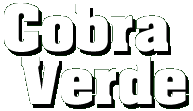 | DVD cover artwork for Cobra Verde.
[click photo for larger version] |
The sequence where Cobra Verde trains the women to fight is remarkable. Herzog organized hundreds of women actresses to play the warriors. Kinski walks through their ranks, brandishing a spear, holding it high and driving forward as she strikes the spear against their shields. The women became so enthusiastic and swept up in the roles that they were playing that Herzog was nearly crushed on payday when the women rushed forward to claim their money.
Curiously, while the story itself is fascinating material (it's loosely based on a book by Bruce Chatwin, The Viceroy of Ouidah), the movie itself remains detached and uninvolving. Occasional sequences are effective, such as the aforementioned sequence where the women warriors are trained, but many sequences are so stylized that they seem to belong in a spaghetti western. Unfortunately, the stylization freezes the actors and robs the story of any immediacy and urgency.
On several occasions on the DVD's audio commentary track, Herzog says he would have done things differently today. For example, the movie includes a wonderful scene where a group of young women chant a tribal song, but this scene is an autonomous fragment with no relation to the surrounding movie. Herzog admits on the commentary track that he would now delete the scene. Likewise, during the movie's baffling ending, Herzog's camera focuses on a boy stricken with polo as he walks along the beach. On the commentary track, Herzog admits that he holds the shot for much too long, way past the point it becomes uncomfortable. Herzog's intention was to equate the crippled state of the boy's body with the crippling blow upon the African continent by slavery. But Herzog forces his message at the expense of narrative coherence.
On the plus side, Cobra Verde is a truly remarkable example of how far Herzog can stretch his budget. Filmed for just $2,000,000, Cobra Verde looks like a mega-epic, involving thousands of extras and the construction of huge sets. If filmed by a major American studio, Cobra Verde would likely have cost many times Herzog's budget.
Anchor Bay Entertainment has given excellent presentations to both Aguirre, the Wrath of God and Cobra Verde. Both discs include trailers and notes on Herzog and Kinski. In addition, the audio commentary tracks by Herzog are exceptionally insightful and valuable. All movie directors who consider providing audio commentary on DVD releases of their own movies should listen to the care that Herzog takes on these commentary tracks. Herzog is a great storyteller and the extreme conditions under which he filmed these two movies make for fascinating listening.







